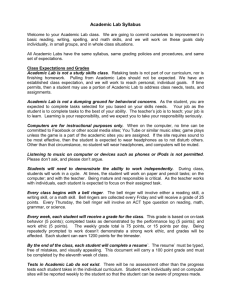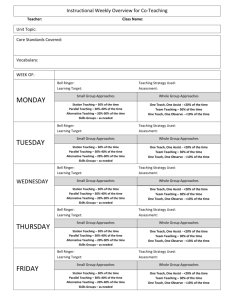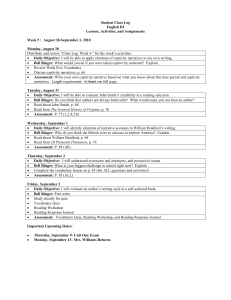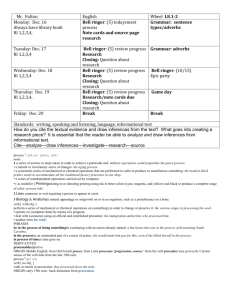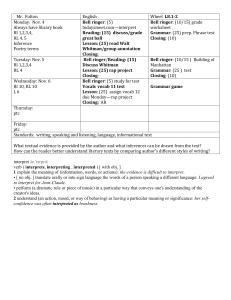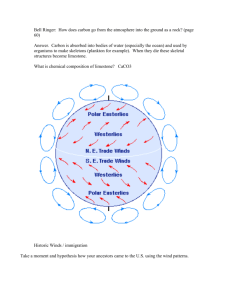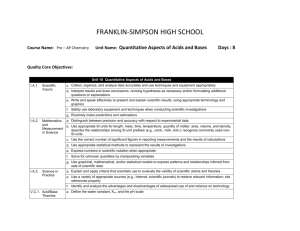Types of Reactions & Electrochemistry
advertisement
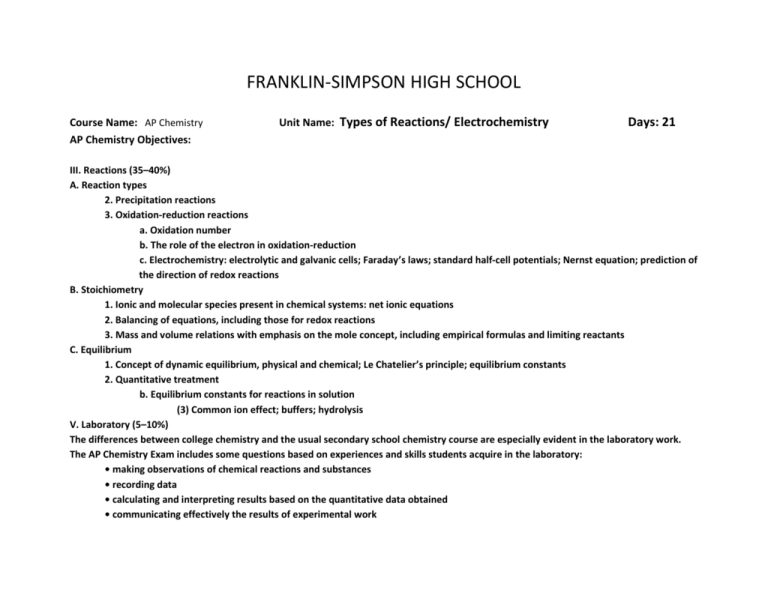
FRANKLIN-SIMPSON HIGH SCHOOL Course Name: AP Chemistry AP Chemistry Objectives: Unit Name: Types of Reactions/ Electrochemistry Days: 21 III. Reactions (35–40%) A. Reaction types 2. Precipitation reactions 3. Oxidation-reduction reactions a. Oxidation number b. The role of the electron in oxidation-reduction c. Electrochemistry: electrolytic and galvanic cells; Faraday’s laws; standard half-cell potentials; Nernst equation; prediction of the direction of redox reactions B. Stoichiometry 1. Ionic and molecular species present in chemical systems: net ionic equations 2. Balancing of equations, including those for redox reactions 3. Mass and volume relations with emphasis on the mole concept, including empirical formulas and limiting reactants C. Equilibrium 1. Concept of dynamic equilibrium, physical and chemical; Le Chatelier’s principle; equilibrium constants 2. Quantitative treatment b. Equilibrium constants for reactions in solution (3) Common ion effect; buffers; hydrolysis V. Laboratory (5–10%) The differences between college chemistry and the usual secondary school chemistry course are especially evident in the laboratory work. The AP Chemistry Exam includes some questions based on experiences and skills students acquire in the laboratory: • making observations of chemical reactions and substances • recording data • calculating and interpreting results based on the quantitative data obtained • communicating effectively the results of experimental work Purpose of the Unit: Students have just completed the review unit covering their summer assignment on stoichiometry and a review of nomenclature. Students have also been introduced to net-ionic equations during first year chemistry. This information will be essential to successfully completing the unit of reaction types and Electrochemistry. Students will first be introduced to redox reactions and will learn how to predict products of these equations and balance them using various methods. Students will gain an understanding of how spontaneous (Galvanic/ Voltaic) cells and non-spontaneous (electrolytic) cells work. They will also be able to represent them graphically, construct them, and experimentally and theoretically determine their voltage output. Students will also be able to use the Nernst equation to calculate cell potentials at non-standard conditions. In addition, students will also compute stoichiometry problems involving redox and electrochemistry equations. Prerequisites: Students will need an understanding of: *LeChatlier’s principle * Solubility rules * General Solubility * Balancing equations Daily Lesson Guide Day Lesson Content and Objectives Focus Questions 1-3 Solution Stoichiometry/ Types of Reactions III.A.2, 3 III.B.1, 2, 3 * What are the types of stoichiometry problems that can be solved using solution stoichiometry? * What are the different types of reactions? 4-5 Types of Reactions/ AP Worksheet III.A.2, 3 * What are the different types of chemical reactions? * How do I predict the products of different reaction types? 6-7 Redox Reactions III.A.3 III.B.2 * What are redox reactions? * How are redox reactions balanced and used? Critical Thinking (High Yield / Literacy /LTF/etc.) * Summarizing and note taking * I Do – We Do – You Do * Analysis/ Application * Learning with others Engagement Assessment and/or Accommodations * ACT bell ringer * Take notes on modeled notes * Solve problems within notes solo and in small groups (formative) * Evaluate student sample problems for understanding * Summarizing and note taking * I Do – We Do – You Do * Analysis/ Application * Learning with others * ACT bell ringer * Take notes on modeled notes * Solve problems within notes solo and in small groups (formative) * Evaluate student sample problems for understanding * Summarizing and note taking * I Do – We Do – You Do * Analysis/ Application * Learning with others * ACT bell ringer * Take notes on modeled notes * Solve problems within notes solo and in small groups (formative) * Evaluate student sample problems for understanding 8-9 * How can I experimentally determine: the concentration of KMnO4 with H2O2? * Learning with Others * Generating and testing Hypotheses * Authenticity * Novelty and Variety * Analysis/ Applications/ Synthesis * ACT bell ringer * Work in small lab groups to solve a lab problem * Use data collected to calculate voltage of cells (summative) * Evaluate lab reports * Students can check themselves by verifying their results among other lab groups 1011 Laboratory: AP required lab 8: Determination of Concentration by Oxidation‐Reduction Titration of H2O2 III.A.2, 3 III.B.1, 2, 3 V. Galvanic Cells III.A.3 * What are batteries and how do I determine the cell potential for the system? * Summarizing and note taking * I Do – We Do – You Do * Analysis/ Application * Learning with others * Evaluate student sample problems for understanding 1213 Nernst Equation III.A.3 * How do I solve cell potential problems for cells not at standard conditions? * Summarizing and note taking * I Do – We Do – You Do * Analysis/ Application * Learning with others 1415 Electrolytic Cells III.A.3 III.C.2 * How are electrolytic cells like/ different from voltaic cells? * Summarizing and note taking * I Do – We Do – You Do * Analysis/ Application * Learning with others * ACT bell ringer * Take notes on modeled notes * Solve problems within notes solo and in small groups (formative) * ACT bell ringer * Take notes on modeled notes * Solve problems within notes solo and in small groups (formative) * ACT bell ringer * Take notes on modeled notes * Solve problems within notes solo and in small groups (formative) * Evaluate student sample problems for understanding * Evaluate student sample problems for understanding 1617 Reaction Types & Electrochemistry FRQs and MC questions III.A.2, 3 III.B.1, 2, 3 III.C.1, 2 V. * How will I be tested over reaction types and electrochemistry on the AP Chemistry Exam? * How does everything I just learned fit together with what I already know? * Learning with others * Choice * Clickers 1819 Laboratory: AP required lab 20 and 21: Electrochemical series and cells III.A.2, 3 III.B.1, 2, 3 III.C.1, 2 V. Unit Exam III.A.2, 3 III.B.1, 2, 3 III.C.1, 2 V. * How can I experimentally determine: cell potential of voltaic and electrolytic cells? * Learning with Others * Generating and testing Hypotheses * Authenticity * Novelty and Variety * Analysis/ Applications/ Synthesis * Can I use my knowledge to take an AP-like exam covering reaction types and electrochemistry? * Evaluation * Analysis * Application * Synthesis * Authenticity 2021 * ACT bell ringer * Work independently, then in small groups, then as whole class to solve and grade FRQ’s with AP rubrics * Use clickers and Turning Point to answers MC Questions from retired AP exams (summative) * ACT bell ringer * Work in small lab groups to solve a lab problem * Use data collected to calculate voltage of cells (summative) * Evaluate student responses and provide immediate feedback on FRQ’s and MC’s with rubrics and keys * ACT bell ringer * Solve retired AP Chemistry MC and FR Questions * Graded by AP standards and rubrics (summative) * Evaluate exam * Evaluate lab reports * Students can check themselves by verifying their results among other lab groups
